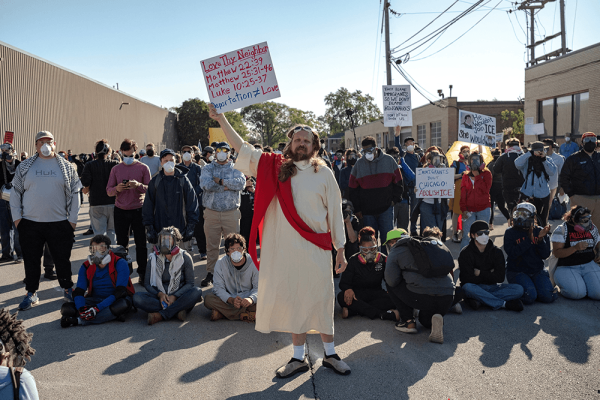In response to ongoing federal threats from President Donald Trump, Chicago faith leaders organized a surge of solidarity to protect the most vulnerable. Alongside a deep pride for their city, some of the organized actions share a critical motif: joy.
Community leaders in Chicago were already alert to the threat that Trump posed to immigrant communities in Chicago when the president began hinting at sending the National Guard into the city to support Immigration and Customs Enforcement agents and cut the crime rate of what he falsely claimed to be the most dangerous city in the world. For some of the faith leaders, it was important that they protest not just the dangerous influx of troops, but also the false narrative surrounding their city.
“We’re called to be constantly rejoicing,” Rev. Juan Pablo Herrera told Sojourners. “It’s a spiritual strength that we can have in times of negativity coming against us, that we can choose to live with joy as a way of defying the forces of principality.”
Read the Full Article

